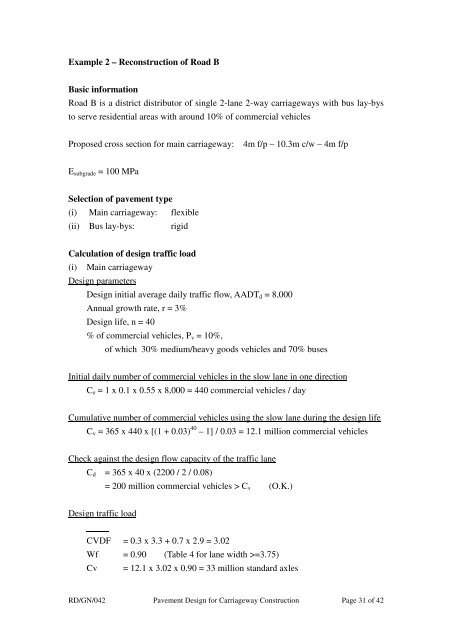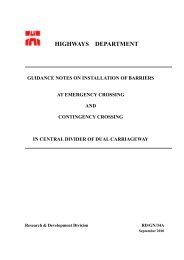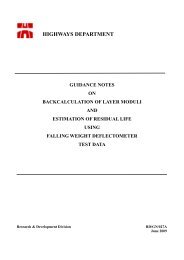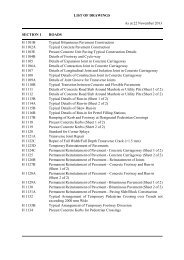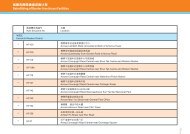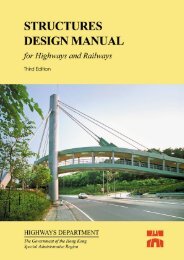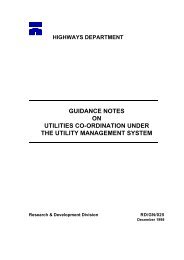Pavement Design for Carriageway Construction
Pavement Design for Carriageway Construction
Pavement Design for Carriageway Construction
You also want an ePaper? Increase the reach of your titles
YUMPU automatically turns print PDFs into web optimized ePapers that Google loves.
Example 2 – Reconstruction of Road BBasic in<strong>for</strong>mationRoad B is a district distributor of single 2-lane 2-way carriageways with bus lay-bysto serve residential areas with around 10% of commercial vehiclesProposed cross section <strong>for</strong> main carriageway:4m f/p – 10.3m c/w – 4m f/pE subgrade = 100 MPaSelection of pavement type(i) Main carriageway: flexible(ii) Bus lay-bys: rigidCalculation of design traffic load(i) Main carriageway<strong>Design</strong> parameters<strong>Design</strong> initial average daily traffic flow, AADT d = 8,000Annual growth rate, r = 3%<strong>Design</strong> life, n = 40% of commercial vehicles, P v = 10%,of which 30% medium/heavy goods vehicles and 70% busesInitial daily number of commercial vehicles in the slow lane in one directionC e = 1 x 0.1 x 0.55 x 8,000 = 440 commercial vehicles / dayCumulative number of commercial vehicles using the slow lane during the design lifeC v = 365 x 440 x [(1 + 0.03) 40 – 1] / 0.03 = 12.1 million commercial vehiclesCheck against the design flow capacity of the traffic laneC d = 365 x 40 x (2200 / 2 / 0.08)= 200 million commercial vehicles > C v (O.K.)<strong>Design</strong> traffic loadCVDF = 0.3 x 3.3 + 0.7 x 2.9 = 3.02Wf = 0.90 (Table 4 <strong>for</strong> lane width >=3.75)Cv = 12.1 x 3.02 x 0.90 = 33 million standard axlesRD/GN/042 <strong>Pavement</strong> <strong>Design</strong> <strong>for</strong> <strong>Carriageway</strong> <strong>Construction</strong> Page 31 of 42


